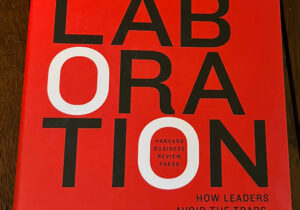Paper-Writing Checklists To Prevent Headaches Down the Road
Avoid authorship headaches and streamline the path from data to paper with these checklists.
CRediT Taxonomy
Developed by a group of librarians, information scientists, and the director of the MIT Press, the CRediT Taxonomy allows authors to define precisely the contributions every author makes to the paper. Potential contributions that can be attributed to individual authors include conceptualization, methodology, data curation, visualization, funding acquisition, project management, and writing (broken into original draft and reviewing/editing), along with several others. Use it at the beginning of a project to assign tasks or simply keep it in front of you as you and colleagues develop a paper, checking off items as contributed.
Several journals, including those published by Cell Press, now encourage or require use of this taxonomy. The Consortia Advancing Standards in Research Administration Information (better known as CASRAI) collaborated with the NIH to link CRediT to ORCID and include contributor roles in publication metadata.

Authorship Grids
Two early career researchers and a journal editor recently put together a series of detailed authorship grids for quantitative, qualitative, and literature synthesis manuscripts as part of an article on grids’ use and effectiveness. The grids lay out responsibilities associated with the roles of first author, middle authors, and senior author in each type of manuscript, from who writes the IRB application to who coordinates manuscript revision.
Grids are meant to inspire discussion rather than regulate who does what, and so are completely customizable to your team, the project you’re doing, and how you prefer to split up the work. They can also be submitted to journals for attribution of author contributions.
Read the article and get the grids.
CONSORT Checklists
The Consolidated Standards of Reporting Trials (CONSORT) Group provides many resources and best practices for turning your trial into a paper to be proud of. The most well known is the CONSORT 2010 checklist for reporting a randomized controlled trial, but they also provide checklists for reporting pragmatic trials, N-of-1 trials, harms, patient reported outcomes, and more.
The checklists provide both an explanation of what each of 25 elements of the paper should contain or look like for each kind of trial and examples of correctly written elements. Using the checklist will ensure you include everything necessary for a complete and transparent report of your trial’s findings, from eligibility criteria to outcomes, randomization and blinding to losses and exclusions, and more.
CONSORT also provides a flow diagram for patient enrollment and progression through a trial. Not only can this be a useful figure in a paper, but it can help you plan your trial from the very beginning.
View the checklists. (Link defaults to CONSORT 2010 checklist; use dropdown at top right to explore other checklists.)
STROBE Checklists
STrengthening the Reporting of OBservational studies in Epidemiology (STROBE) has produced several checklists, similar to those from CONSORT, of what to include in each section of a paper on observational studies. The group has developed checklists for cohort, case-control, and cross-sectional studies.
SRQR Checklists
As above, developers of the Standards for Reporting Qualitative Research have created a checklist for papers in the qualitative research world.
If the checklists above don’t fit your type of research, never fear: The EQUATOR Network (Enhancing the QUAlity and Transparency Of health Research) has Get the checklist. to suit all kinds of research. Whether you do animal studies, case reports, systematic reviews or economic evaluations, there’s a list to help you showcase your data in the clearest, most effective and complete way.
Additional Resources
A Big Step Forward in Standardizing Rules for Authorship
Author, Author, Who’s Got the Author?







0 Comments